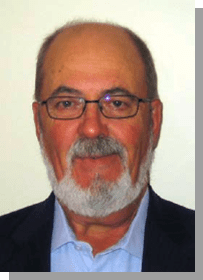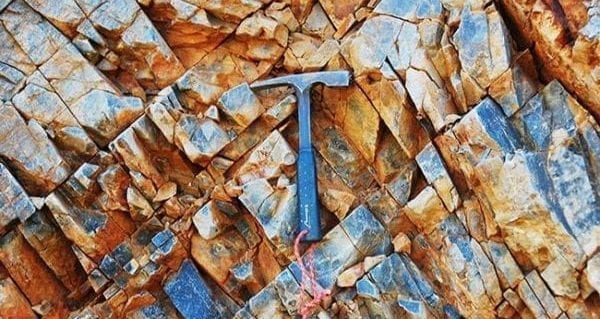John Rucci is president and CEO of Voyageur Minerals.

John Rucci
Please explain the history of Voyageur. How did it come about and what does it do?
Rucci: Voyageur was started in 2012 by Brent Willis, chief operating officer, and Brad Willis, vice-president of exploration, as a private company. They’ve been exploring for minerals and in particular barite for the last 32 years. They’ve taken properties from small outcrop to producing mines twice in their careers and are experts in the field of barite exploration.
At this point, I joined the team, and brought my public company and mining experience to the company. I had previously started two other precious metals mining companies and both went into production of gold. I’ve started numerous public companies throughout my career.
After Voyageur completed its first sample program on the Frances Creek deposit, the value of BaSO4 (sarium sulfate) was very high. The majority of barite deposits in the world contain 70 to 85 per cent BaSO4 content. The Frances Creek barite registered as high as 99.5 per cent BaSO4 in the ground. This would make the Frances Creek deposit one of the highest grade deposits worldwide. It’s the exceptionally high grade that allowed Voyageur to pursue high-end revenue markets.
What’s your market for the barite deposits, who buys them for what purposes?
Rucci: When most people think of barite, they think of oil and gas drilling where barite is mixed with the mud to increase the density and prevent blowouts. Barite used in the oil patch contains 85 yo 86 per cent barium sulfate. Our Frances Creek deposit contains 96 to 99 barium sulfate in the core from last year’s drilling. As a result, the direction of the company has changed to pursue the high-end revenue markets. We’ll be selling Voyageur’s products into two of the highest value markets, pharmaceutical and blanc fixe.
The pharmaceutical market is a product called barium contrast solution. This is the product you drink before your X-ray or C-scan. The main component of this medicine is barite, pure and finely ground to one micron. Voyageur is in discussions with a private company, which has a history of producing, selling and distributing many pharmaceutical products, to complete a joint venture. This joint venture of course will give the company the impetus to enter the contrast market easily.
The blanc fixe market sells to the high purity barite customers. Blanc fixe is created using a century-old technology, the black ash method. It’s an easy method to produce a 99-plus per cent barium sulfate and Voyageur intends to sell this product into one of the world’s highest revenue markets.
- manufacture of pigments;
- manufacture of plastics products;
- manufacture of paper;
- manufacture of batteries and accumulators;
- industrial manufacture of coatings and inks;
- manufacture of paints and coatings;
- industrial and professional use of paints and coatings;
- cosmetics;
- fillers.
The same question for the lithium deposits?
Rucci: With regards to the lithium, we have multiple areas with defined zones to depth. We have high-value lithium, some of the highest in North America. All of the zones are at depth and have been drilled previously from oil and gas wells. So we know the structures are there, the structures are big and the lithium values indicate high potential to produce from this multiple areas.
The claims are near Moab, Utah. We have the source of the lithium high grade staked in a joint venture with Anson Resources.
The claims have covered the vertical fault zone called the Roberts Rupture. This large fracture was in place before the large meteor impact that’s documented next to the property impacted the area. The fault is called a rupture due to the fact that extreme pressure and temperature forced water and rock to explode up the fracture, pushing dolomite boulders from 10,000 feet below to surface.
The fault is naturally fracked with rock particles forced into the salt formation that holds the lithium brines. This is why there are such high flow rates along this fault zone. The lithium grades are enriched due to the ability of the fluids to geothermally cycle freely along this massive structure. The highest grades of lithium are located in the salt on the contacts of the clastic zones and every time the water cycles past these zones, the water is enriched.
So it has potential for some very economic production of lithium.
Where do you see growth potential in the future for the company?
Rucci: The company’s goal and potential for the future is in the pharmaceutical and blanc fixe markets.
The pharmaceutical goal in three years is to be producing 10 million bottles of barium contrast per year, and the bottles sell for $8 to $12 each.
Once blanc fixe is in production, the company believes it can penetrate a very large and lucrative market. We believe we can generate up to $30 million in revenue a year.
My goal is to get this company generating $100 million per year in the shortest time possible.
As an entrepreneur, what have been your biggest challenges?
Rucci: My biggest challenges as in any startup are as follows:
- financing;
- product recognition – to this end we find that we’re always educating everyone as to the uses of barium, barium is not a well-known mineral;
- getting an audience for our company and products;
- having the investors understand how large the different product revenue is;
- to this end, we’re signing a joint venture with a very large manufacturer that will lead us cash flow in the very near future.
– Mario Toneguzzi
The views, opinions and positions expressed by columnists and contributors are the author’s alone. They do not inherently or expressly reflect the views, opinions and/or positions of our publication.



